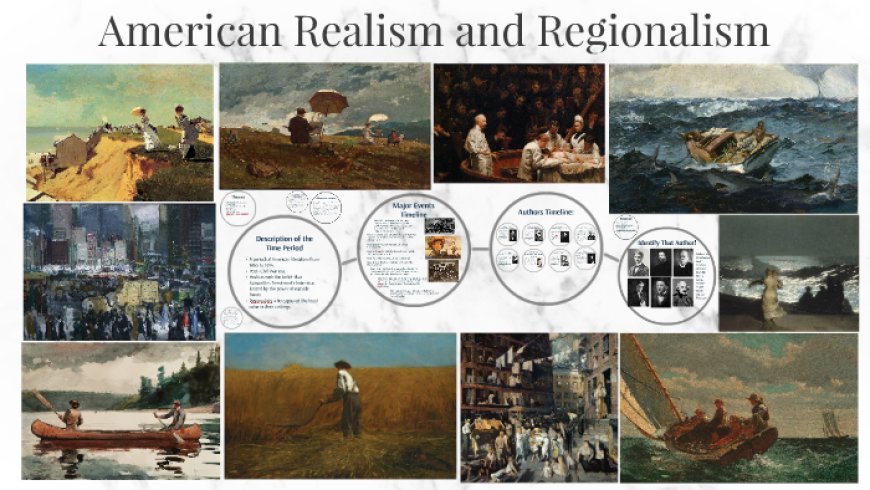The Role of Regionalism in American Literature

Introduction
Regionalism, a literary movement in American literature, focuses on representing the distinct characteristics of different regions of the United States. Originating in the late 19th and early 20th centuries, this movement sought to capture the unique social, cultural, and geographic elements of American life. By portraying regional settings and dialects, regionalism not only enriched American literature but also provided a means for exploring broader themes of identity, culture, and the American experience.
Historical Context
The emergence of regionalism coincided with a period of significant transformation in the United States. The late 19th and early 20th centuries were marked by rapid industrialization, urbanization, and a growing sense of national identity. As America expanded westward and underwent profound changes, memoir writing services sought to preserve and reflect the diverse experiences of the nation’s various regions. Regionalism arose as a counterpoint to the dominant nationalistic and modernist trends, emphasizing local color and the particularities of place.
Key Characteristics of Regionalism
Regionalist literature is characterized by its focus on specific geographic areas and the people who inhabit them. This literary movement emphasizes local dialects, customs, and traditions, creating an immersive experience for readers. The portrayal of regional landscapes and settings serves not only as a backdrop but also as a critical element that shapes the narrative. Regionalist writers aim to depict the everyday lives of ordinary people, often highlighting the contrasts between different areas of the country.
Use of Dialect and Language
A defining feature of regionalism is the use of dialect and vernacular language. Regionalist authors meticulously capture the linguistic peculiarities of their chosen locales, employing dialects that reflect the speech patterns and idioms of the people. This use of regional dialects adds authenticity to the characters and setting, allowing readers to experience the narrative in a manner true to its geographical and cultural context. For example, Mark Twain’s portrayal of the Mississippi River region in "The Adventures of Huckleberry Finn" uses local dialects to bring his characters to life and ground his story in its specific setting.
Depiction of Local Customs and Traditions
Regionalist literature often delves into the customs, traditions, and everyday life of its setting. Writers explore local festivals, social practices, and regional occupations to provide a comprehensive picture of the community. By showcasing these elements, regionalism preserves and celebrates cultural heritage, offering readers a window into the distinct ways of life across different parts of the United States. For instance, Kate Chopin’s works, such as "The Awakening," reflect the Creole culture of Louisiana, including its social norms and traditions.
Exploration of Regional Identity
Regionalism also addresses themes of regional identity and the complexities of belonging to a particular place. Through its focus on local characters and settings, regionalist literature often explores how individuals and communities define themselves in relation to their environment. This exploration can reveal tensions between regional and national identities, as well as the ways in which local experiences contribute to the broader American narrative. Regionalist authors frequently examine the impact of social and economic changes on their regions, reflecting on how these transformations influence local identities.
Prominent Regionalist Writers
Several notable authors have made significant contributions to the regionalist movement, each bringing their unique perspective and style to the portrayal of American regions.
Mark Twain
Mark Twain, a central figure in American regionalism, is renowned for his vivid depictions of the Mississippi River region. Twain’s novels, such as "The Adventures of Tom Sawyer" and "The Adventures of Huckleberry Finn," offer rich portrayals of life along the river, capturing the dialect, customs, and landscape of the area. Twain’s use of local color and vernacular language provides readers with an authentic experience of the region, while his stories also address broader themes of social justice and human nature.
Kate Chopin
Kate Chopin is another key figure in the regionalist movement, known for her exploration of the Creole culture of Louisiana. Her short stories and novels, including "The Story of an Hour" and "The Awakening," reflect the social dynamics and cultural practices of the region. Chopin’s work highlights the challenges faced by women and the complexities of regional identity, offering a nuanced portrayal of life in the South.
Sarah Orne Jewett
Sarah Orne Jewett is celebrated for her depiction of rural New England life. Her collection of short stories, "The Country of the Pointed Firs," captures the character and charm of the Maine coast, focusing on the lives of its inhabitants. Jewett’s attention to detail and her use of local dialect contribute to a vivid and authentic representation of the region, emphasizing the connections between people and their environment.
Impact of Regionalism on American Literature
Regionalism has had a lasting impact on American literature, influencing subsequent literary movements and shaping the way regional identities are represented in fiction. The focus on local color and detailed settings has contributed to a richer understanding of the diverse experiences within the United States. Regionalist literature has also paved the way for later literary movements, such as realism and naturalism, which continue to explore the interplay between environment and character.
Influence on Realism and Naturalism
The emphasis on local detail and authentic representation in regionalism laid the groundwork for the realist and naturalist movements. Realist writers, such as Henry James and Theodore Dreiser, adopted a similar focus on everyday life and the complexities of human experience. Naturalist authors, including Stephen Crane and Frank Norris, built on the regionalist tradition by examining the influence of environment and social conditions on individuals. These movements expanded on the themes introduced by regionalism, exploring the interplay between environment, society, and character in new and innovative ways.
Legacy in Contemporary Literature
Regionalism’s legacy continues to resonate in contemporary literature. Modern authors often draw on regionalist techniques to create immersive and authentic depictions of their settings. Regionalism has also contributed to a broader appreciation for diverse voices and experiences within American literature. By highlighting the distinctiveness of different regions, regionalism has enriched the literary landscape and provided a platform for exploring the complexities of American identity.
Criticisms of Regionalism
Despite its contributions to American literature, regionalism has faced criticism for its potential to reinforce stereotypes and present overly romanticized views of certain regions. Some critics argue that regionalist literature can perpetuate narrow or idealized images of local cultures, overlooking the complexities and diversity within regions. Additionally, the focus on regional dialects and customs may sometimes limit the accessibility of these works to readers unfamiliar with the depicted settings.
Reinforcement of Stereotypes
One criticism of regionalism is that it can reinforce stereotypes about particular regions and their inhabitants. By focusing on specific traits or customs, regionalist literature may inadvertently contribute to a homogenized or oversimplified portrayal of local cultures. This can limit readers’ understanding of the true diversity and complexity of the regions represented, leading to misconceptions or generalizations.
Romanticization of Regional Life
Another critique of regionalism is that it often romanticizes rural or regional life, presenting an idealized version of the past or of local communities. This romanticization can obscure the real challenges and struggles faced by individuals in these settings, creating a portrayal that may be more nostalgic than accurate. Critics argue that this idealized vision can diminish the complexity of regional experiences and overlook the impact of social and economic changes.
Conclusion
Regionalism has played a significant role in American literature by highlighting the unique characteristics and experiences of different regions. Through its focus on local dialects, customs, and settings, regionalist literature has enriched the portrayal of American life and contributed to a deeper understanding of regional identity. Despite criticisms, the legacy of regionalism endures in contemporary literature, continuing to influence how regional experiences are depicted and celebrated. By preserving and exploring the diversity of American regions, regionalism has left a lasting mark on the literary landscape, offering valuable insights into the complexities of American culture and identity.
What's Your Reaction?
 Like
0
Like
0
 Dislike
0
Dislike
0
 Love
0
Love
0
 Funny
0
Funny
0
 Angry
0
Angry
0
 Sad
0
Sad
0
 Wow
0
Wow
0

















































